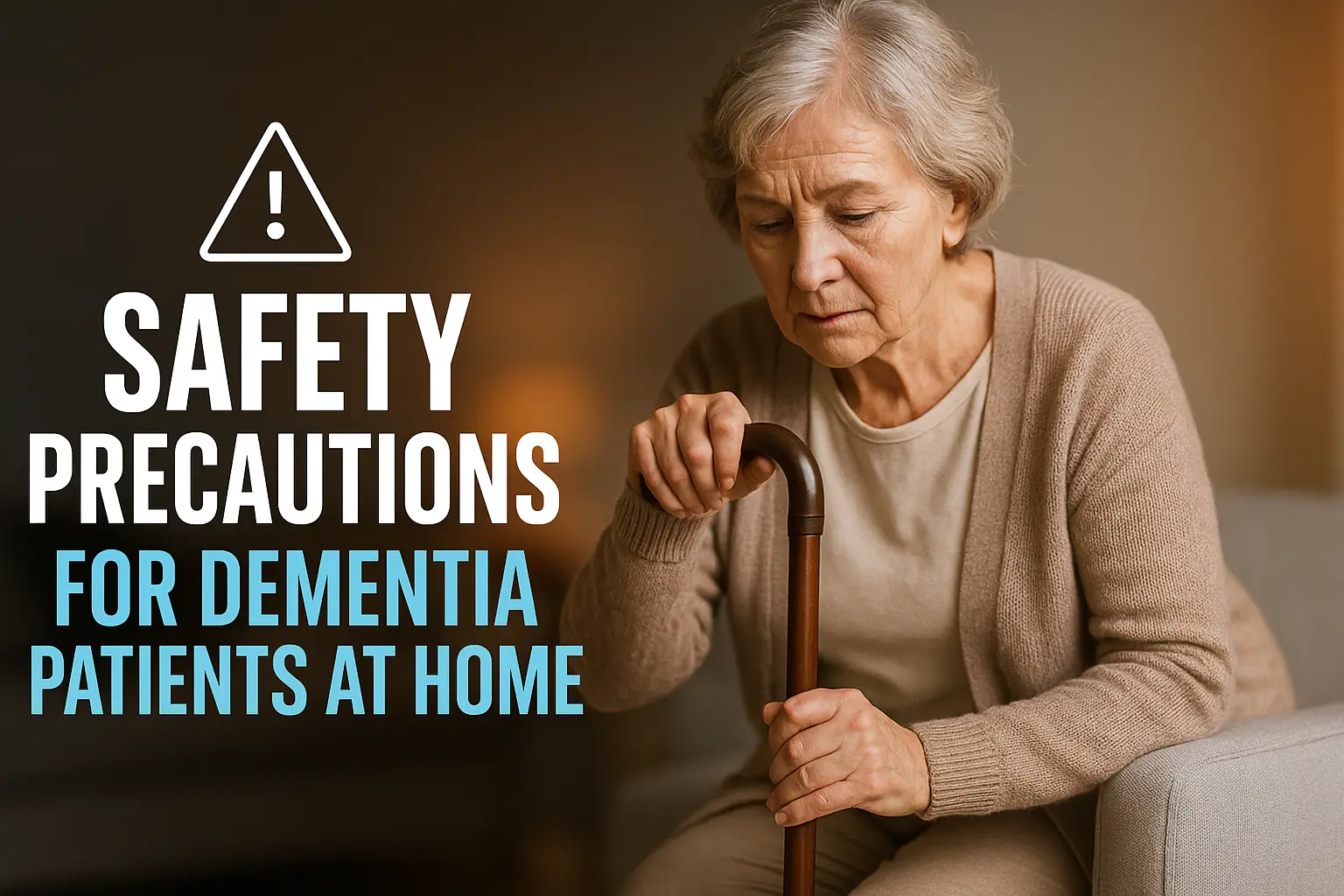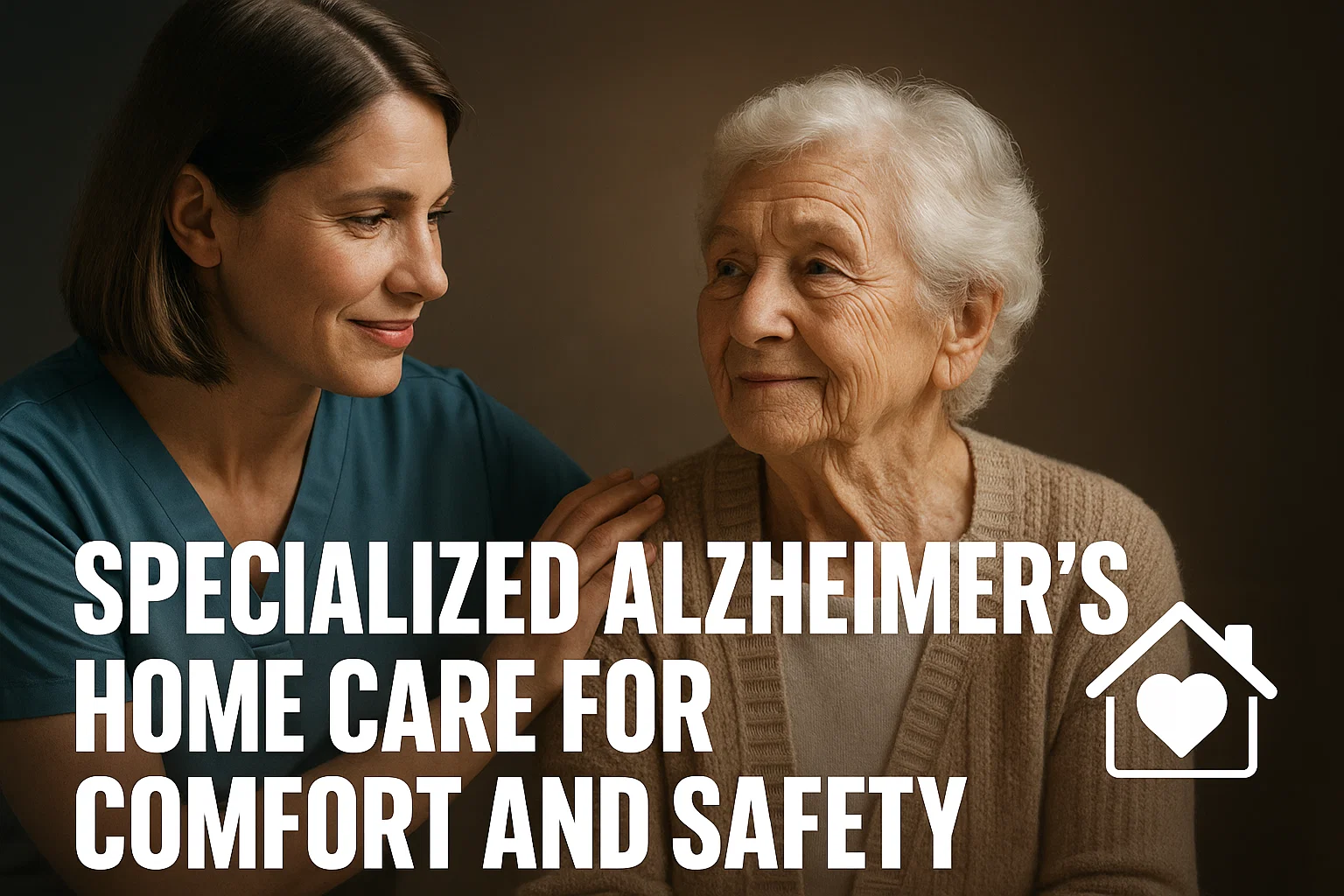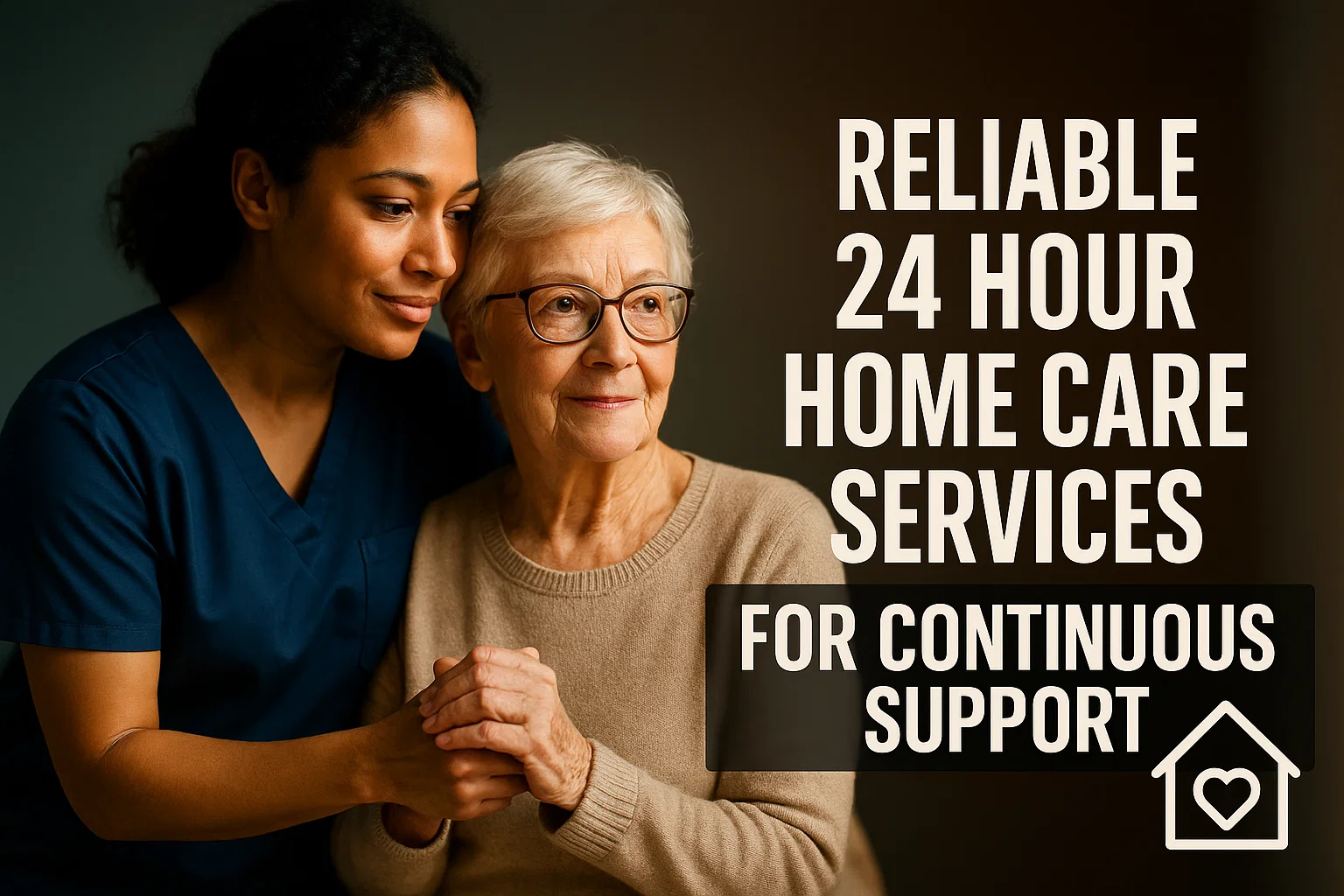Safety Precautions for Dementia Patients at Home: Just imagine you wake up one morning and your former familiar home becomes puzzling, even threatening. That can be a daily experience of a person with dementia. With memory loss and the general cognitive decline, even the straightforward design of the home may turn into a labyrinth with hidden hazards. But this is the best news, you can make your loved one feel safe, secure, and supported at the place where they live, at home.
As a family member, as a full-time caregiver, or as a person who just received the news of dementia in the family, you need to know how to prepare the home environment in order to ensure the safety of the patient and prevent injuries. Whether it is fall prevention or safety in the kitchen, a few changes can result in significant changes in everyday life. This blog explores safety precautions for dementia patients at home.
Why Home Safety Is Crucial for Dementia Care
Cognitive and Physical Changes to Consider: Dementia is not simply memory loss but judgment, perception, motor, and emotional control are impaired. These changes increase the risk of falls and traumas because of miscalculated distances or lack of coordination, and forgetting how to use the kitchen appliances safely resulting in burns or cuts. May rise the chances of strolling out of home, even in familiar areas, and aggression or paranoia, caused by confusion in the environment. By establishing a safe, orderly home environment, you can enable your loved one to be as independent and secure as possible.
Emotional Reassurance for Families: Constant worry is assuaged by knowing that you have done the appropriate precautions. It equally enables other family members and caregivers, since it creates a constant structured atmosphere that is simpler to deal with on a daily basis.
General Safety Precautions for Dementia Patients at Home Guidelines

Declutter and Simplify
A person with dementia can perceive clutter as a barrier or a danger. constitution needs to be cleared of all hallways and living spaces. Make furniture arrangements regular. Minimalistic décor is recommended- the less distractions there are, the safer they can move around.
Pro Tip: Contrasting colors between furniture and floor will also allow better visual recognition. Include Clear Labels and Visual Cues.
Add Clear Labels and Visual Cues
Put big signs that can be read on doors, cupboards and drawers. Put words and pictures on the label rooms such as Bathroom or Kitchen. To limit confusion of time, use clocks that indicate the day and night.
Enhance Lighting
The presence of shadows may cause fear or confusion to dementia patients. Apply high illuminance lighting in the house. Put motion-sensor night-lights in the hallways, bathrooms and bedrooms.
Room-by-Room Safety Enhancements
Kitchen Safety
The kitchen may be a danger area. Eliminate risks with:
- Stove knob covers or automatic shut-off devices
- Automatic shut-off devices or stove knob covers
- Knives and sharp utensils drawers locked
- Cleaning supply and glassware cabinets latches
- Unplugged appliances when not using them
What about wandering in the kitchen then put a motion sensor alarm or block the passage with a gate.
Bathroom Adjustments
Bathrooms are a priority area because of wet floors and sharp edges.
- Grippy mats in and out of the tub or shower
- Pick-up bars next to the toilet and shower
- Anti-scald devices or controlled temperature faucets
- Ease of access walk in shower or tub
- Toileting prompts or visual schedules of hygiene activities
Bedroom Modifications
The bedroom must be a peaceful, safe haven.
- Bed at comfortable height to prevent climbing and falling
- Cushioned furniture corners
- A simple, uncluttered nightstand that contains strictly necessary items
- Nightlights to relieve confusion at night
- Door alarms when night time wandering is an issue of concern
Living Room Setup
- Avoid glass coffee tables or sharp-edged furniture
- Make use of chairs that have armrests
- Throw rugs should be removed or secured
- TV remotes or devices may be covered or hidden in case they are confusing
Preventing Wandering and Exit-Seeking Behavior
One of the most hazardous activities that accompany dementia is wandering.
Secure Entry and Exit Points
- Put deadbolts at high or low doors
- Install door sensors which will notify you when opened
- Imagine a fence and a locked gate, in case you have a yard
- Locate glass doors and put decals or curtains on them to limit visual cues to exit
Distraction and Redirection Techniques
At other times, mild distraction is more effective than challenge. Distract them with a more relaxing task, such as folding laundry, going through old pictures, or watering plants, if they insist on leaving.
GPS and Wearable Trackers
The GPS tracking devices are numerous, and they come as bracelets, keychains, or even shoe inserts, and they alert you when your loved one moves out of a predetermined area. Fall detection medical alert system can be a savior too.
Fire and Electrical Safety Precautions
Smoke and CO Detectors: Place smoke and carbon monoxide alarm in all rooms, specifically, bedrooms and kitchens. Test them once a month and change batteries often.
Electrical Appliance Safety: Unplug toasters, coffee makers and irons when not using them, wrap unused outlets, do not use extension cords, and make sure they are taped down. Use automatic shut off on irons and stovetops
Medication and Household Chemical Safety: Improper management of medication may result in an overdose or missed doses. Store all medications in a locked cabinet, and look at a pill organizer with audible reminders that comes pre-filled. Keep harmful chemicals in containers that are child proof, and put strong labels on everything and beyond reach.
Emergency Preparedness: Be Ready Before It’s Needed
Emergency Contact Information: Put a visible list next to each phone, and in the binder of the caregiver, with family physician, nearest hospital, number of the caregiver, next-door neighbors or close relations, and local ambulance.
Essential Supplies Checklist: you must keep first aid kit, batteries and flashlights, additional garments and blankets, fire extinguisher and extra prescribed drugs
Create a “Go Bag”: In case of emergency leaving, keep a small bag with medical records copy, new picture of your beloved, legal paperwork (POA, insurance details), snacks and extra clothes to change.
Helpful Tips for Family Caregivers
Stick to a Routine: Uncertainty decreases predictability which reduces anxiety. Make meal times, bathing and bed time regular.
Encourage Supervised Independence: Let your loved one assist in folding towels, sweeping the floor or setting a table. Dignity is brought about by purposeful activity.
Observe Behavior Closely: When your loved one gets more agitated, confused or unsteady, re-evaluate your safety precautions. Minor behavior changes are usually the indicators that adjustments must be made.
Take Care of Yourself: It is not possible to pour out of an empty cup. Participate in a support group, take time off and do not be afraid to seek professional assistance when the need arises. Respite care is offered in most communities and should be able to give you the room to rejuvenate.
When to Consider Home Modifications or Professional Help
You might require extra help if your loved one is getting more difficult to handle at home, even with safety precautions:
Home Modifications: Stair lifts or ramps, walk in showers, medical alert systems, and video surveillance in the home (not safety).
In-Home Support Services: Professional aids are available to help in bathing, medication administration and mobility. These services will be able to lower your stress levels as well as ensuring that your loved one receives the care that they require.
Memory Care Facilities: Somehow the safety of the home is no longer assured despite your best efforts, the move to a memory care community may be the most caring decision. Seek facilities which are specialized in dementia and offer structured environment which is nurturing.
Conclusion
Safety Precautions for Dementia Patients at Home: Taking care of a loved one with dementia may be an astounding experience but building a secure, recognizable, and supportive environment does not have to be. With just a few easy but well-calculated measures, such as exits blocking, clutter cutting and visual aids introduction, you can drastically decrease the safety hazard, at the same time enhancing the quality of life. It is not merely physical safety but peace of mind, of the person with dementia, as well as of those who love and care about him or her.
Precious Pearls Health Home Care is aware of the physical and emotional requirements of dementia caregiving. It is due to this reason that we provide professional caring at home services that are suitable to your individual requirements. If you require assistance with establishing a safe environment in your home or you need personal care, our personnel are here to assist you through the process. If you are ready to provide your loved one with the quality care they need at the comfort of home. Call Precious Pearls Health Home Care now and allow us to assist you in bringing safety and tranquility in your home.
FAQs
How do I stop a dementia patient from wandering at night?
Place door alarms, lock exits and have a calming bed time routine to lessen agitation.
What’s the safest room in the house for a dementia patient?
The safest ones are usually a simple, well-lit bedroom near the bathroom with the least amount of clutter.
What are safety precautions for dementia patients at home?
They are safety measures like removing hazards, labeling items, and installing locks to prevent accidents and confusion. These help create a secure, dementia-friendly living space.






